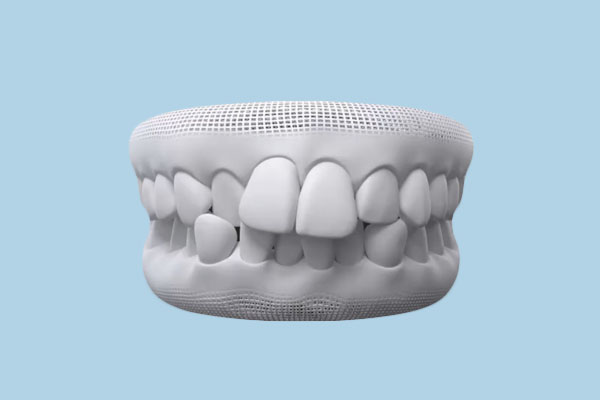Contents

Overlapping Teeth: Causes, Risks, and Solutions
Overlapping teeth, also known as dental crowding or malocclusion, is a common problem that affects many people, regardless of their age. This condition can not only impact the aesthetics of a smile but also lead to oral health problems if not treated in time. In this comprehensive article, we will explore in detail the causes, risks, possible solutions, and answer the most frequently asked questions on the subject.
The Multiple Causes of Overlapping Teeth
Several factors, alone or in combination, can contribute to the appearance of overlapping teeth:
- A jaw that is too small for the size of the teeth, often due to hereditary factors.
- A narrow palate, which does not leave enough space for proper tooth alignment.
- Premature loss of baby teeth, creating spaces into which other teeth can shift.
- Too many teeth, as in cases of hyperdontia.
- A family history of malocclusion, highlighting the importance of genetic factors.
- Bad habits during childhood, such as thumb sucking or prolonged pacifier use.
The Different Types of Dental Crowding and Their Specifics
Health professionals distinguish three main types of dental crowding, each with specific causes and characteristics:
- Primary dental crowding: This type is mainly caused by hereditary factors, such as a jaw that is too small for the size of the teeth.
- Secondary dental crowding: This type is usually due to environmental factors, such as bad habits during childhood or the premature loss of baby teeth.
- Tertiary dental crowding: This type is often caused by the eruption of wisdom teeth in adolescence or adulthood.
The degree of crowding can vary. We speak of mild crowding when the overlap is less than 3 mm, moderate between 3 and 5 mm, and severe beyond 5 mm.
The Oral Health Risks Associated with Overlapping Teeth
If overlapping teeth are not treated, they can worsen over time and lead to various oral health problems:
- Buildup of plaque and tartar in hard-to-reach areas, promoting cavities and periodontal diseases.
- Difficulty maintaining good oral hygiene, which can lead to bad breath and gum problems.
- Inflammation and bleeding of the gums.
- Premature and abnormal wear of tooth enamel.
- Development of more serious bite problems.
- Psychological impact, related to low self-esteem.
Effective Solutions for Correcting Overlapping Teeth
Several therapeutic options exist to correct overlapping teeth, depending on the severity of the problem and the patient's age:
Dental Veneers, a Cosmetic Solution for Mild Cases
For mild dental crowding, the placement of dental veneers in composite or ceramic can be an effective and quick solution. This technique involves applying thin layers of material to the teeth to correct their position, shape, and color.
Orthodontic Treatments, the Key to Correcting Moderate to Severe Overlapping
For more significant cases of overlapping teeth, orthodontic treatments are the solution of choice. There are different options, including traditional metal braces, ceramic braces, lingual braces, and clear aligners.
Early Solutions to Prevent Overlapping Teeth in Children
The prevention of overlapping teeth starts at a young age. It is recommended to consult an orthodontist from the age of 6-7 for a first check-up. Interceptive orthodontics aims to correct jaw growth and tooth positioning problems before the permanent teeth erupt.
Treatment Duration and the Importance of Post-Orthodontic Retention
The duration of an orthodontic treatment depends on several factors. On average, it takes between 12 and 24 months of active treatment to satisfactorily align the teeth. Once the treatment is completed, a retention phase is essential to maintain the results obtained.
Conclusion: The Importance of Appropriate Management of Overlapping Teeth
Overlapping teeth are a common problem that can have significant aesthetic and functional consequences if not treated in time. Early detection and appropriate management can effectively correct overlapping teeth and prevent long-term complications.
FAQ - Frequently Asked Questions About Overlapping Teeth
At what age should you consult for overlapping teeth?
It is recommended to consult an orthodontist from the age of 6-7 for an initial screening. For adults, there is no age limit to consult and undergo orthodontic treatment.
How long does orthodontic treatment last?
The duration of orthodontic treatment varies, but on average, it takes between 12 and 24 months of active treatment.
What are the options for discreet orthodontic treatment?
There are several options for discreet orthodontic treatment, including ceramic braces, lingual braces, and removable clear aligners like Invisalign.
Is orthodontic treatment painful?
Orthodontic treatment can cause some discomfort or tooth sensitivity, especially at the beginning of the treatment and after adjustments. This discomfort is usually well-managed with pain relievers and simple measures.
